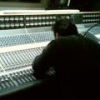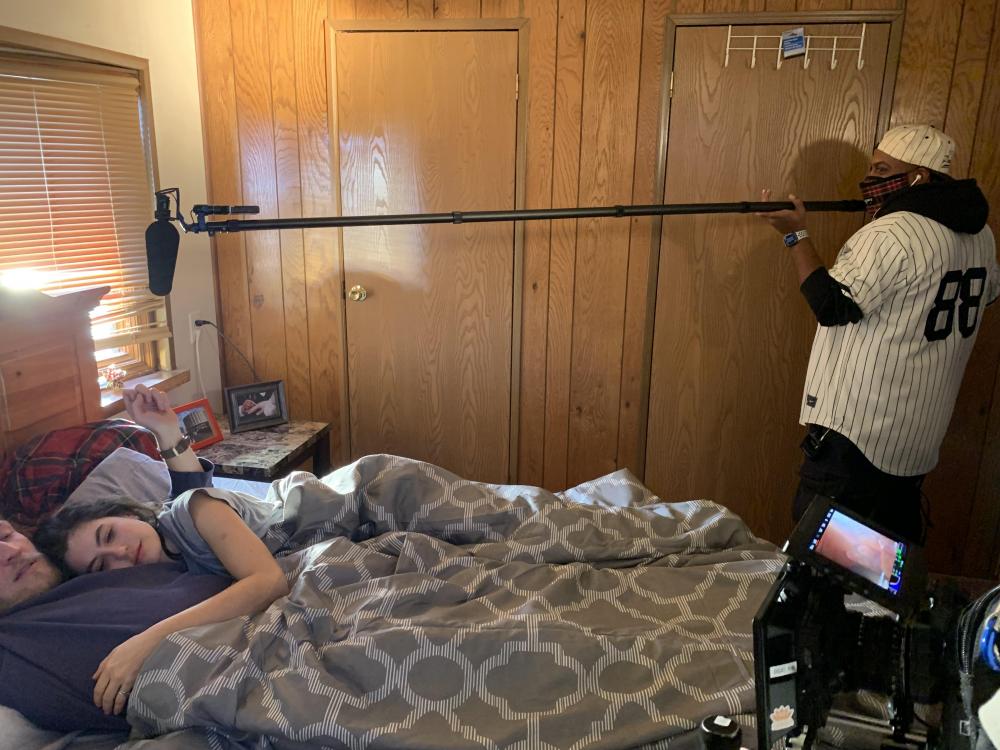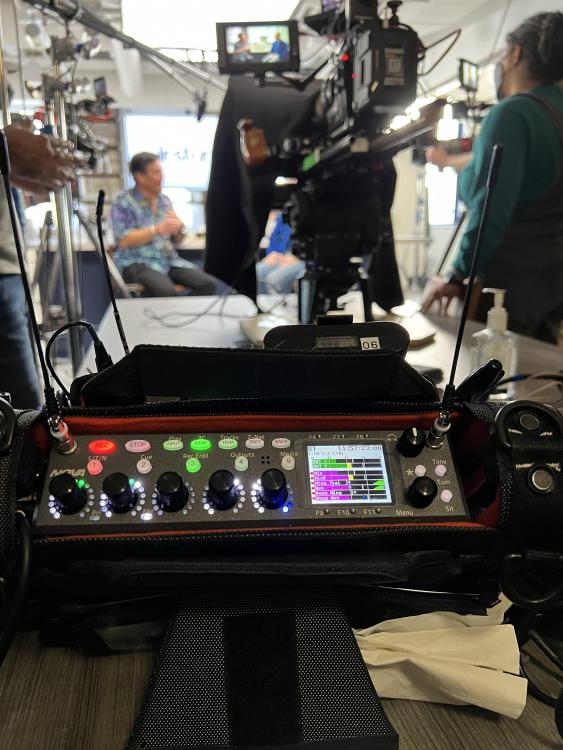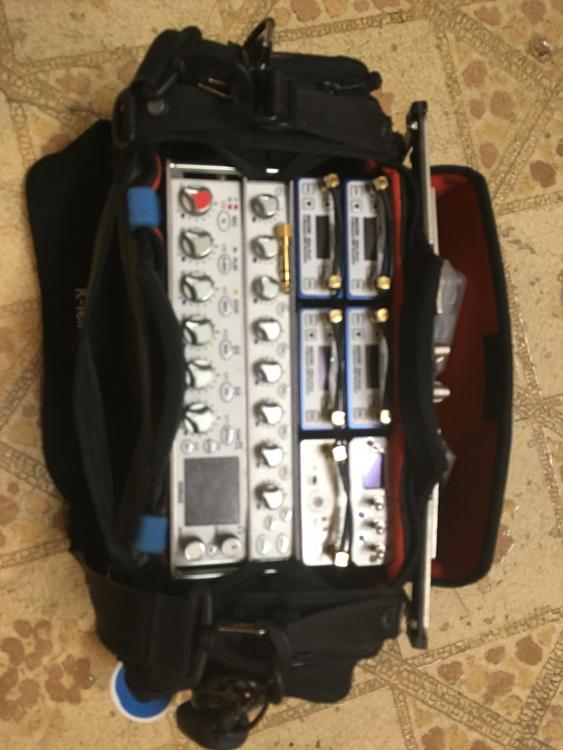-
Posts
225 -
Joined
-
Last visited
Content Type
Forums
Gallery
Store
Everything posted by Carlos Maeda
-
I currently own the S-QT and M-QT, and will likely buy an XL-QT at some point later this year. VdB currently has the best "collapsed-to-extended" ratio of any boom pole on the market. My S-QT fits into a 1535 Pelican upright along the lid's edge, not even diagonally. The quarter turn collars are ok; sometimes you need more force to keep the sections from collapsing. They work as advertised for the most part. If your mic setups are lightweight, then there's almost zero flex. Here's a shot of my friend using my M-QT with a 4017C in a Cinela and a ZMT transmitter, and it's pretty flat. Not sure how they'd hold up if you have a heavier setup at the business end. I will say that the sections are noisy when extending/collapsing, so if you do that mid-take often, the VdB might not be the best for you. They also advertise the removable tips can be used as a mic quick-release mount, nut this is only true of the most recent models that have a small set screw to keep the topmost collar from falling off if no tip is installed. The QT poles I bought in late 2019 did not and recently had to order them through Gotham.
-
Here's the user manual. Bottom of page 5 has all the different setup options for TS-3/TS-C. http://www.denecke.com/Support/Documents/Slate Operating Instructions.pdf
-
I’m also part of the “+5dB club.” Partly because I just don’t fully trust Neverclip at the transmitter (I’ve somehow still managed to clip the TX once or twice despite using stock and group-suggested settings), but also because I’m a little OCD and prefer the trim dots on the meters to line up with the “-20” indicator smack in the middle of the screen.
-
A soldered connector will always be more reliable than using microdot adapters. That being said, you gain flexibility with microdot by being able to use those lavs with multiple different connectors and being able to swap them in seconds. You have to weigh the pros/cons and decide for yourself what's best for your specific workflow. FYI, I use mainly DPA and a couple Deity ones for "stunt" roles and they're all on microdot because I sometimes need to switch between Zaxcom 3pin lemo and Lectrosonics 5pin TA5f. My packs don't see too much abuse so I found the flexibility of microdot to be worth the hit in reliability.
-
This would most likely only be a problem if you are working in an RF-coordinated environment where someone is assigning you specific frequencies and marking/double-checking your equipment. Outside of that, it would be very difficult to determine both your gear’s power output and ability to tune outside the legal gap unless they’re close someone was close enough to touch it. Personally, I do just enough coordinated events that it had me feeling a bit uncomfortable about using them entirely, and ended up selling all my b25 gear just to alleviate the potential stress. That’s a decision you’d have to make for yourself. If you’re interested in being fully-legal to operate in the guard bands, I believe Wisycom and their B7-band of gear are currently the only pro wireless to fully meet the legal requirements. Of course that may change as other manufacturers decide for themselves whether it’s worth the investment to come out with new gear designed to work within those parameters. For what it’s worth, I spoke with reps from 4 different “location sound specific” wireless manufacturers at NAB2019 about this very subject, and at the time all but Wisy said it currently wasn’t worth it, but would evaluate again in the future.
-

Abetek 'RadCad' - 12 AA Caddy Charger
Carlos Maeda replied to abetek's topic in Manufacturers & Dealers
Reviving this thread to hopefully gain some feedback after extended real-world use. @Constantin @ao @Sndspd any thoughts? -

Wisycom MPR52 with G3/G4 experiences?
Carlos Maeda replied to OnTheSoundSideOfLife's topic in Equipment
@daniel That’s what made me revive this thread. To my knowledge and everything I’ve read so far, only Wisy receivers can emulate EVO modulation not transmitters. @henrimic how would you describe the audio quality of the G3 tx to MCR52? While I would’ve preferred to use Wisy tx for higher power output and wideband spectrum, this could sitll possibly serve my original goal of having a pair of tx transmit “broadcast quality” audio to camera while also being able to listen to either tx via Senn IEM. -

Wisycom MPR52 with G3/G4 experiences?
Carlos Maeda replied to OnTheSoundSideOfLife's topic in Equipment
The goal is to be as efficient with my spectrum use as possible by reducing the number of transmitters needed. In the past I’ve been able to accomplish this with just mono-scratch/reference audio to camera by using a Lectro system all set to IFB mode. Trying to replicate this as best as possible with “broadcast-quality” audio to camera, for the few instances where it’s still necessary. I’ve tried doing this with Lectro SRc/LT in modes 3 and 6 (units were pre-ETSI compliant) with disappointing results. TX to IFB sounded ok in Mode 3 and better in Mode 6, but less than ideal audio with very low gain levels when SRc set to matching mode. I could replicate the same with Lectro’s DHCT and M2R units, but at over $1k a piece that’s a heavy pill to swallow if I want to have 8+ IFBs and hand them out to producers and agency creatives. Hence my desire to find a system that would work the inexpensive yet good sounding Senn IEMs. -

Wisycom MPR52 with G3/G4 experiences?
Carlos Maeda replied to OnTheSoundSideOfLife's topic in Equipment
@Derek H from what I’ve read, is basically a 250mW-only version of the SK2000, and just like the 2K is not available in the A1 (470-516) frequency band I’m looking for. -

Wisycom MPR52 with G3/G4 experiences?
Carlos Maeda replied to OnTheSoundSideOfLife's topic in Equipment
Sorry for reviving an old thread. @TJW I’m curious to hear more about your experience in using Wisycom transmitters with G3/G4 IEM receivers. I’m currently making a switch from Lectro IFB to Sennheiser ones, but want to pair the IEMs with a more capable bag-friendly transmitter. I’m a Zaxcom user and all my talent mics cannot tune below 512, so ideally I’d get IEMs in the A1 band (470-516). Sennheiser currently does not offer the 100mW-capable SK2000 in that band, limiting me to their SK500 G3/G4 transmitters at a 50mW max. Lectro tx in compatibility modes are an option but not that great to my ears. I’d also be interested to hear how good/bad the sound quality is of a Wisycom MCR52 receiving audio from a Wisycom transmitter all in EVO modulation. The “perfect” scenario for me would be to have 2x transmitters in the bag sending “broadcast-quality“ audio to a dual channel receiver on an eng camera, and clients with G4 IEMs being able to tune into the same frequencies. -

A review of Nova “OneUnit” and mrx214 wireless modules.
Carlos Maeda replied to RadoStefanov's topic in Equipment
Now if only they can implement the type of system Shure Axient does, where it can reassign and change freq on both RX and TX within a couple milliseconds. Then again, that's why those systems run for so much more $$$ than anything else. -
I’ve used my CMIT in the -40F Chicago winter last year without any problems. Only issue I’d be worried about is condensation buildup from moving between outdoors and indoors. So long as it’s “climatized” you should be fine.
-
Another thing to consider is how much will the heat expended by the 833 affect the other gear components in the bag. Chances are receivers are at least within an inch of the recorder, if not directly on top of it. The ACCUMULATED heat may be too much.
-
You’re absolutely right. The numbers listed are totals from individual components only (Nomad, FP8, 4x QRX200, MP2, distro). Does not include weight of the bag itself, cables, external antennas, batteries, etc. My Nomad bag as shown is probably between 15-20lbs depending on how many batteries and additional gak I have in the side pockets. A Nova bag should be around 6-8lbs depending on bag/battery/accessories/etc. All that said though, a fully stocked Nova bag will end up being somewhere around 30% of the weight of my previous bag and be every bit as capable without any sacrifices.
-
The new tech is simply incredible. This tiny OneUnit weighing only 3.5lbs fully loaded will give me more capability than my current Nomad bag weighing almost double (6.5lbs) before accounting for all the various power and audio cables.
-
One thing to consider about going the boosted Zaxnet is interference in the bag. Myself and a buddy both run Nomads and were interested in ERXs for IFB and TC. We both tried one of the small Sunhans 2.4 amps that Gene at SGS was tinkering with to see how things played out. In my friend's bag, it caused tons of hiss and static in his recorded tracks, and we linked the cause to be interference entering the recorder via his Lectro SRbs and 411a. I had no such issue in my bag, but I was running all Zaxcom wireless via AES digital in. Plugged in some older 200 series wireless in my bag and sure enough the interference was there. Swapping cables, grounding shells, separate power supplies, etc... only thing that worked was physical distance between the receivers and the amp. I've since moved back to using Lectro R1a to stay compatible with a couple other local mixers in case I need to rent additional units, and by combining an R1a with one of those new Ultrasync One sync boxes, I can replicate most of the ERX's feature set with added reliability and extended range.
-

Can a Lectro R1A UHF IFB Receiver "listen in" on a SMQV to SRC camera hop?
Carlos Maeda replied to alenK's topic in Equipment
You have to decide whether the quality of an IFB signal is is sufficient for camera in that instance. For me, since scratch/reference is the norm, I do this fairly often either by strapping an R1a to camera or renting a buddy's 411. Very convenient to only need 1x transmitter in the bag. -

Low Profile XLR Connectors - Cable Techniques vs Remote Audio
Carlos Maeda replied to benr's topic in Equipment
I've only soldered the Remote Audio option, but have seen and held the Cable Techniques one as well. The RA design is physically smaller than a Neutrik straight or angled connector, but seemed to weigh slightly heavier. I used these as a replacement to the horrible K-Tek ones that come with their Klassic poles. The RA option uses a metal cap that only offers 4 possible angles for cable routing (45, 135, 225, and 315). The angles didn't bother me since I was using this at the end of a pole, but could see how that could pose a problem in a bag. I was surprised at how small and light the CT design was when I first held one. Really like how variable the cable angle can be adjusted to, but is a molded plastic so it's definitely not as strong as the RA's all-metal cap. Considering you plan on using these in a bag, I'd save some money and go with the CT option. -
In that case, I wonder if it's worth URSA's time and effort to test a waist strap that incorporates some of the special "gripper" material to better differentiate it from the competition like on the thigh and chest straps.
-
I would suggest having the option to add silence at the heads and tails of files shorter than the longest. I can see how on certain instances it would be better to heir on the side of caution and not "remove" any data for the sake of a common start/stop point. That said, it would also be nice to have the option to select a "master" track and have your app trim all other tracks to match it. This would be great for those using bodypack recorders in conjunction with a main bag or cart recorder, that would normally be recording continuously and independent from each other. Example of this would be Zaxcom TRXs recording on transmitter boot up.
-
First off, I'm pretty disappointed at the battery life in general. I've had a pair of these for a month now and I average just over 4hr at 50 or 75mW, let alone the 5.5hr runtime that has been repeated from Zaxcom consistently, or anywhere close to the competing product's "real-world" runtime of close to 6hr (granted w/o features like NC, Znet, recording, 75mW option). I have yet to need these tiny packs for an extended period of time, but purchased them with the idea that PowerRoll could extend that runtime, whatever it may be, further. To now hear that it will no longer be implemented has me contemplating exchanging these for full-size TRXs. Would be nice to have an official statement from Zaxcom on the matter.
-
If you're in NYC talk to Gotham Sound. They can sell your gear to us pro users via consignment.
-
Another thing to consider is if you'll be using your 664 in the bag as well as on the cart. With a mixer, you'll have multiple cables for ISOs, mix, power, etc and could be cumbersome to switch back to "bag mode". Much easier to accomplish this with the CL12.
-

Shoulder Straps for Radio Mic Transmitters
Carlos Maeda replied to workingsound's topic in Equipment
I've seen college basketball players wearing similar systems during practice leading up to March Madness. Would probably be easy enough to replace the tracker with a transmitter. Though unless it's a sport where theres ample padding involved, or a non-athletic setting, you should probably look at the flexible Q5X wireless systems as to not harm the athlete in case of a fall. -

Another TA5 low profile! Not right angle this time
Carlos Maeda replied to 100sideprojects's topic in Do It Yourself
That does look cool. My biggest gripe with the Switchcraft connector is the tendency for the plastic boot to crack over time. The lack of spark edges or corners on your design is also a plus.

.png.279748a58a2b862b7aa5f3b84126e232.png)




